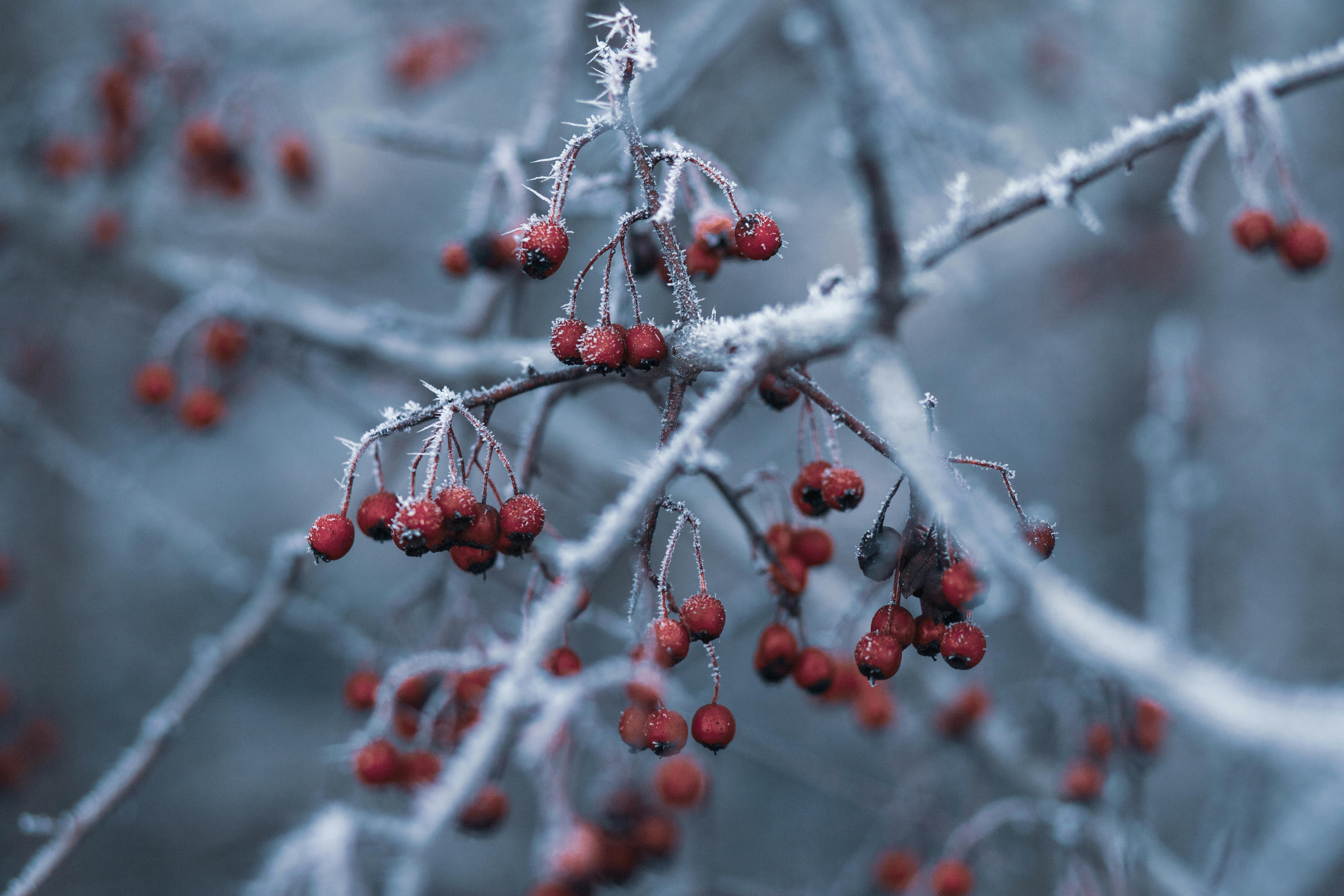Pruning is an important part of keeping a healthy and productive fruit tree. Winter is the ideal time to prune most fruit trees, as the dormant season allows for better visibility of the structure of the tree. Pruning in winter also encourages strong shoot growth during the spring and summer months. This article will provide you with tips on how to prune your fruit trees in winter.Pruning fruit trees in winter can provide numerous benefits that will help the tree produce a larger harvest of healthy fruit. Pruning during the winter months helps to reduce fungal and disease problems, as well as control the size and shape of the tree. Additionally, pruning can help to improve air circulation within the canopy of the tree, allowing more sunlight to reach all parts of the tree for better growth. Furthermore, pruning in winter can also direct energy towards fruiting buds rather than toward vegetative ones, resulting in a larger harvest. Finally, pruning in winter encourages more new growth which will make for a stronger and healthier tree overall.
Advantages of Pruning Fruit Trees in Winter
Pruning fruit trees in winter has several advantages, as it ensures that the tree will produce healthy and abundant fruit. Winter pruning helps to promote better air circulation and light penetration throughout the branches of the tree. This helps to reduce disease and pests, as well as encouraging better fruit production. Additionally, pruning during the winter months can help to shape and train a tree’s structure, which will help it look more attractive and ensure that its growth remains healthy. Winter is also the best time to prune fruit trees because it is when they are dormant. This means that they will not be putting energy into new growth, so any cuts made during this period will not affect the fruit yield of the tree. Finally, winter pruning can help to reduce the amount of work required for subsequent years, as it can prevent overcrowding from occurring in future seasons.
Overall, there are many benefits to pruning fruit trees in winter. Not only does it encourage better air circulation and light penetration throughout the tree’s branches, but it also helps shape and train its structure. Additionally, pruning during this time of year reduces the amount of work required in future years by preventing overcrowding from occurring.
Pruning Fruit Trees In Winter
Pruning fruit trees in winter is an important part of keeping them healthy and productive. It helps to keep the tree balanced, encourages new growth, and helps to ensure that the fruit is of good quality. Pruning also keeps the tree from becoming too large for its allotted space. In order to properly prune a fruit tree during the winter months, there are certain tools needed. These tools include loppers, pruning saws, hand pruners, and pole pruners.
Loppers are used to remove large branches from a tree. They have long handles and are available in sizes ranging from two to four feet long. Pruning saws are used to make precise cuts on larger branches that cannot be removed with loppers. Hand pruners have short handles and can be used for smaller branches or twigs. Pole pruners are similar to hand pruners but they have long handles which allow you to reach higher branches without having to climb the tree.
When using any of these tools, it is important to take safety precautions such as wearing gloves and eye protection while working around sharp objects like saws or blades. It is also important to use sharp blades when cutting branches so that a clean cut can be made without leaving jagged edges behind which can cause damage or disease in the tree later on. Finally, all tools should be disinfected after each use as this will help prevent the spread of disease between trees or even within one tree if there are multiple types of fruits being grown in it.
Pruning fruit trees in winter can seem daunting at first but with the right tools and knowledge it can become an easy task that will result in healthier trees and better tasting fruit!
When is the Best Time to Prune Fruit Trees In Winter?
Pruning fruit trees during the winter months is the most effective way to ensure healthy growth and abundant fruit yields. Pruning during this time of year helps to promote air circulation and reduce disease, while also allowing for easier identification of branches that need to be removed. Winter pruning also encourages new growth in the spring, which can help increase yields.
When pruning in winter, it is important to take into account the type of fruit tree you are working with. Some trees require more severe pruning than others in order to achieve maximum yield and health benefits. Many deciduous fruit trees, such as apples, pears, cherries and plums, benefit from being pruned in late winter before new growth begins. This allows the tree to have more time to recover from any cuts or wounds that may occur from pruning. Citrus and other evergreen trees should be pruned in early winter or late autumn when they are not actively growing.
When it comes to actually pruning your fruit trees, it’s important to focus on removing dead wood and branches that are overcrowding or crossing each other. This will help encourage air circulation throughout the tree and create a more open canopy for better sunlight penetration. It’s also important to remove any diseased or damaged branches as soon as possible in order to prevent disease spread throughout the tree. Finally, it is best practice to thin out any overly dense foliage so that light can reach all parts of the tree evenly.
Overall, pruning your fruit trees during the winter months is an essential part of maintaining healthy growth and abundant yields during harvest season. Prune with care and focus on removing deadwood, overcrowded branches, and diseased/damaged wood for best results. By taking these steps you can ensure your fruit trees remain healthy throughout the year!
How to Prepare Before Pruning Fruit Trees In Winter
Before pruning fruit trees during the winter season, it is important to take a few preparatory steps. First, check your tools. Make sure all pruning shears, loppers, and saws are sharp and clean before use. Dull or dirty tools can cause damage to the tree and increase the risk of spreading disease. It is also important to inspect the trees for any signs of disease or damage before pruning. If there are any signs of infection, it is best to wait until late winter or early spring for pruning as this will provide the tree with more time to recover from infection before actively growing again in spring.
Next, prune away any dead or diseased branches as soon as possible during winter. This will help reduce the risk of further infection and make it easier for new growth to occur in spring. Additionally, if there are any broken branches or damaged limbs, these should be removed during winter as well. It is also important to prune away any crossing branches that may interfere with new growth in spring.
Finally, don’t forget to clean up after yourself! Remove all clippings from the tree and surrounding area after you have finished pruning in order to reduce the risk of disease spread and insect infestations. Additionally, it is important to properly dispose of all clippings by either composting or incinerating them according to local regulations. Pruning correctly during winter is essential for ensuring healthy fruit trees come springtime!

Step 1: Prepare Your Trees for Pruning
Before pruning your fruit trees in winter, you must first prepare them. Start by removing any dead, diseased, or damaged branches. These can be removed with a pair of loppers or pruning shears. Once the unhealthy branches are removed, begin thinning out overcrowded branches to allow more light and air to reach the center of the tree. This will help promote healthy growth. Once that is done, you should be ready to move on to step two.
Step 2: Prune Branches at Certain Angles
When pruning fruit trees in winter, you should always make sure that branches are cut at certain angles. This will help ensure that water and nutrients can reach the newly-exposed areas of the tree. Make sure to cut at a 45-degree angle away from the bud or shoot you wish to keep. This will help encourage new growth in that direction.
Step 3: Remove Unnecessary Suckers
Suckers are shoots that grow from the base of trees and can steal energy from other parts of the tree if they become too numerous. To remove them, simply grasp them between your thumb and forefinger and pull them away from the trunk with a gentle tug. If necessary, use a pair of pruners or loppers to cut through any thicker suckers.
Step 4: Selectively Prune Branches
Selective pruning is an important part of maintaining healthy fruit trees in winter. Selective pruning involves removing branches that are crossing over each other or interfering with each other’s growth in some way. It also involves removing dead wood so that more energy can flow into healthy parts of the tree.
Step 5: Maintain Your Tool
After pruning your trees, make sure to clean and maintain your tools properly so they stay sharp and effective for future use. Clean off clippings with soap and water before storing your tools away for next season’s work.
Pruning Fruit Trees in Winter Correctly
Pruning fruit trees during the winter months is an important part of maintaining healthy and productive trees. Pruning has multiple benefits, including improved air circulation, increased sunlight penetration, and better access for pest control and maintenance. The winter months are an ideal time for pruning because the trees are dormant and less susceptible to damage. Pruning during this time also helps to shape the tree’s canopy so that it can withstand strong winds and snow loads during the winter. To ensure optimal results, there are a few key techniques that should be followed when pruning fruit trees in winter.
When pruning fruit trees in winter, it is important to begin by removing dead, diseased or damaged branches. These should be removed with sharp shears or a saw to ensure clean cuts without damaging the surrounding wood. It is also important to thin out overly dense areas of the canopy in order to improve air circulation and light penetration. Care should be taken not to remove too much foliage as this could reduce yields and affect flowering and fruiting. When thinning out branches, be sure to leave some foliage on each branch so that the tree can still photosynthesize.
In addition to removing dead or damaged branches, it is also important to prune back overgrown branches in order to maintain a desired size and shape of the canopy. This should be done with sharp shears or a saw as well, taking care not to create large wounds that could become infected with disease or attract pests. It is also important not to prune too severely as this could stress out the tree and reduce yields.
Finally, it is important not to cut back too far into old wood when pruning fruit trees in winter as this could damage the buds that will eventually produce new growth in springtime. Instead, focus on cutting back just enough so that new growth can emerge from these buds without being damaged by frost or snowfall.
By following these techniques correctly when pruning during winter months, you can help ensure healthy and productive fruit trees for many years to come!
Protect Your Plants After Pruning Fruit Trees In Winter
Pruning fruit trees in winter is an essential part of keeping your plants healthy and productive. When done correctly, it can improve the quality of the fruit produced as well as encourage the growth of new buds and branches. However, pruning can also leave your trees vulnerable to damage from cold weather and pests. To protect your plants after pruning, it is important to take steps to ensure they are properly cared for during the winter months.
One way to protect your plants after pruning is to cover them with burlap or other protective material. This will not only keep them warm but also help prevent pests from entering your garden. Additionally, mulching around the base of the tree can help retain moisture and help insulate against extreme temperatures. Watering regularly throughout winter will also help keep the soil moist and protect roots from frost damage.
In addition to providing protection from cold temperatures, it is important to take precautions against pests as well. Spraying trees with insecticides or horticultural oils can help deter pests such as aphids and mites from infesting your trees. It is also important to inspect trees regularly for signs of disease or infestation so that any issues can be addressed promptly.
Finally, pruning back branches during winter can provide additional protection for your plants. Removing dead or diseased branches will reduce potential sources of infection and can help improve air circulation around the tree’s canopy, which can reduce humidity levels that encourage pest infestations. Pruning should only be done when necessary though, as over-pruning can weaken a tree’s structure and make it more susceptible to damage in cold weather.
By taking measures to protect your plants after pruning in winter, you can ensure that they stay healthy and productive throughout the season. Covering trees with protective material, mulching around their bases, watering regularly, spraying with insecticides or horticultural oils when necessary, and pruning back dead or diseased branches when needed are all effective ways to keep your fruit trees safe during the colder months.

Conclusion
Pruning fruit trees in winter can help promote healthy, productive growth in the spring and summer. It is important to consider the age and type of tree before pruning, as well as what type of pruning is necessary. Pruning in winter can be done at any time after the leaves fall but before new growth begins in the spring. The goal of pruning is to promote healthy and strong growth for the upcoming season, while removing any dead or damaged wood. Proper pruning techniques are important to maintain a healthy tree and promote good fruit production. With proper care, your fruit trees will produce better quality fruits for many years.
Winter pruning can be a rewarding experience that will help keep your fruit trees healthy and productive for years to come. With careful planning and good maintenance practices, you can make sure your fruit trees look beautiful and bear delicious fruits each year.



